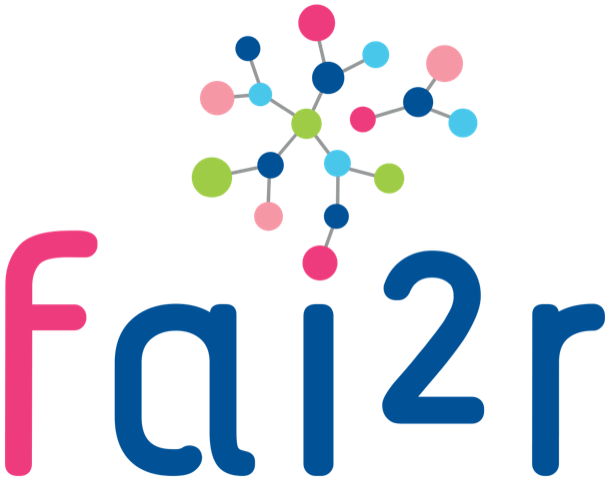Les recherches cliniques en cours
CC-10004-BCT-003
Apremilast par voie orale chez les enfants de 2 à 18 ans atteints de la maladie de Behçet
• Maladie(s) concernée(s) :
Autres MAIBehçet
• Résumé
Cliquez ici
Etude de phase 3 multicentrique randomisée en double aveugle et contrôlée versus placebo, visant à évaluer la tolérance et l’efficacité de l'apremilast administré par voie orale chez des patients âgés de 2 à moins de 18 ans atteints de la maladie de Behçet
• Contact(s) :
CC-10004-PSA-016
Apremilast par voie orale chez les enfants de 5 à 18 ans atteints de rhumatisme psoriatique
• Maladie(s) concernée(s) :
AJIRhumatisme psoriatique
• Résumé
Cliquez ici
Etude de phase 3 multicentrique randomisée en double aveugle et contrôlée versus placebo, visant à évaluer la tolérance et l’efficacité de l'apremilast administré par voie orale chez des patients âgés de 5 à moins de 18 ans atteints de rhumatisme psoriatique.
• Contact(s) :
CHIS : base de données
(NCT05969821)
Base de données CHIS : Hématopoïèse Clonale de Signification Immunologique / Clonal Hematopoiesis of Immunological Significance
• Maladie(s) concernée(s) :
ConnectivitesAutre
• Résumé
Cliquez ici
Étude de cohorte observationnelle rétrospective et prospective, nationale et multicentrique visant à caractériser le syndrome VEXAS et les manifestations dysimmunitaires satellites de l'hématopoïèse clonale (SMD, LMMC, etc.)
• Contact(s) :
CNTO1275JPA3001
PSUMMIT-Jr
• Maladie(s) concernée(s) :
AJIRhumatisme psoriatique
• Résumé
Cliquez ici
A Phase 3 Multicenter, Open-label Study to Evaluate the Efficacy, Pharmacokinetics, Safety, and
Immunogenicity of Subcutaneously Administered Ustekinumab or Guselkumab in Pediatric Participants
With Active Juvenile Psoriatic Arthritis (PSUMMIT-Jr)
DESCRIPTION OF COMPOUND
STELARA® (ustekinumab) is a fully human immunoglobulin G (IgG)1 kappa monoclonal antibody (mAb)
which binds with high affinity to the p40 subunit common to both interleukin (IL)-12 and IL-23. The
mechanism of action of ustekinumab is prevention of IL-12/23 p40 binding to the IL-12 Rb1 cell surface
receptor shared by both cytokines. Through this mechanism of action, ustekinumab effectively neutralizes
IL-12 T helper 1- and IL-23 T helper 17-mediated cellular responses.
TREMFYA™ (guselkumab) is a fully human IgG1 lambda (G1λ) mAb that binds to the p19 subunit of
human IL-23 with high affinity. The binding of guselkumab to IL-23 blocks the binding of extracellular
IL-23 to the cell surface IL-23 receptor, inhibiting IL-23-specific intracellular signaling and subsequent
activation and cytokine production.
OBJECTIVES AND ENDPOINTS
The objective of this study is to evaluate the pharmacokinetics (PK), efficacy, safety, and immunogenicity
of ustekinumab and guselkumab in pediatric participants with juvenile psoriatic arthritis (jPsA)
• Contact(s) :
COLCHICAPIPED
Étude dosage de la colchicine dans le cheveux chez les enfants atteints de fièvre méditerranéenne familiale
• Maladie(s) concernée(s) :
Fièvres récurrentesFMF
• Résumé
Cliquez ici
Objectifs de l'étude
- Déterminer s’il existe un lien entre la ou les concentrations de colchicine capillaire et certains facteurs : puberté, âge de l’enfant, exposition aux UV
- Déterminer les situations dans lesquelles le dosage capillaire de la colchicine n’est pas interprétable chez l’enfant
- Evaluer l’observance thérapeutique de la colchicine chez l’enfant atteint de FMF
• Contact(s) :
EUROFEVER
Registre de patients européens pour les MAI
• Maladie(s) concernée(s) :
Fièvres récurrentesFMF, MKD, TRAPS, CAPS, NAPS12, PFAPA, Fièvres récurrentes inexpliquées
Autres MAIDIRA, PAPA, Blau, Behçet, CRMO
• Résumé
Cliquez ici
Registre de patients européens pour les MAI
• Contact(s) :
FMF-VASC
FMF et vascularite: épidémiologie en France
• Maladie(s) concernée(s) :
Fièvres récurrentesFMF
• Résumé
Cliquez ici
L'association d'une vascularite et d'une Fièvre Méditerranéenne Familiale (FMF) est classique mais son épidémiologie est peu connue, notamment en France. Nous aimerions étudier les cas de vascularite survenus chez des patients ayant une FMF en insistant sur le type de vascularite, l'âge de survenue, le type de mutation du gène MEFV et l'évolution des patients (notamment si des biothérapies ont été utilisées).
• Contact(s) :
GenomAAx
Exome sequencing of inflammatory amyloidosis of unknown cause (AAx)
• Maladie(s) concernée(s) :
Amyloses inflammatoiresAmyloses AA
• Résumé
Cliquez ici
The objective of this project is to look for monogenetic causes of AAx: for all AAx DNA available in
our lab. When no mutation is detected by the NGS 55-genes panel, we will perform whole
exome sequencing (WES).
• Contact(s) :
GLPG0634-CL-131
(IAB43872)
An open-label, multiple dose, multicenter study to evaluate the pharmacokinetics, safety, and tolerability of filgotinib in children and adolescents from 8 to less than 18 years of age with juvenile idiopathic arthritis
• Maladie(s) concernée(s) :
AJIOligoarticulaires, Polyarticulaires, Rhumatisme psoriatique, Spondylarthropathies, Systémiques
• Résumé
Cliquez ici
This is a Phase 1, open-label, multiple dose, multicenter study to evaluate the PK, safety, and
tolerability of orally administered filgotinib in 10 subjects from 8 to <18 years of age with
active JIA, with a minimum BW of 15 kg and with at least 3 of them in the BW range from
20 kg to less than 25 kg.
Galapagos CONFIDENTIAL 43952_81695_120030
GLPG0634-CL-131
-16-
The study consists of 4 study periods:
− Screening period: up to 4 weeks
− Core treatment period to characterize the PK of filgotinib and its major active metabolite
at steady state: 10 days with 2 onsite study visits (Day 1 and PK visit [Day 10]). A
primary analysis is planned at the end of this period.
− Prolonged treatment period to provide prolonged treatment access (without PK sampling)
• After Day 10 until Week 12 with 3 onsite visits (Week 4, Week 8, and Week 12) for
all subjects
• Subjects who achieve American College of Rheumatology Pediatric 30%
(PedACR30) response rate at Week 12 will have alternating phone calls and onsite
study visits every 4 weeks until Week 92 or roll-over into the planned Phase 3 open�label long-term extension (LTE) study, whichever occurs first
− Follow-up period with 1 onsite safety visit 4 weeks after the last investigational product
(IP) administration (only for subjects who are discontinued or who completed the study
but do not roll over into the planned open-label LTE study)
During the 10-day core treatment period, eligible subjects will take IP every morning (on site
or at home depending on the day). At the PK visit (Day 10), PK samples will be drawn at the
following timepoints: predose and 0.5, 1, 2, 3, 4, and 8 hours postdose. Subjects will have to
stay in the clinic the entire day at the PK visit.
Following the 10-day core treatment period, subjects can enter the prolonged treatment period
where they will continue to take IP once daily (q.d.) every morning. At the Week 12 visit,
treatment response (i.e. PedACR30) will be evaluated in each subject:
− Responders (i.e. subjects who achieve PedACR30) can continue in the prolonged
treatment period until they can roll over into the planned open-label LTE study or until
Week 92, whichever occurs first.
− Non-responders (i.e. subjects who do not achieve PedACR30) will be discontinued from
the study and will complete a safety follow-up visit 4 weeks after the last dose of IP.
• Contact(s) :
JA0005
(NCT06668181)
Une étude ouverte visant à évaluer la pharmacocinétique et la sécurité deBimekizumabchez les participants à l'étude pédiatrique atteints de sous-types actifs d'arthrite juvénile idiopathique, notamment l'arthrite liée à l'enthésite (y compris la spon
• Maladie(s) concernée(s) :
AJIRhumatisme psoriatique, Spondylarthropathies
• Résumé
Cliquez ici
L’objectif de cette étude est d’évaluer les concentrations plasmatiques de bimekizumab après administration sous-cutanée (sc) de bimekizumab.
• Contact(s) :
JIR cohorte
(NCT02377245)
Base de données pour les patients atteints de rhumatisme inflammatoire
• Maladie(s) concernée(s) :
AJIOligoarticulaires, Polyarticulaires, Rhumatisme psoriatique, Spondylarthropathies, Systémiques
Fièvres récurrentesFMF, MKD, TRAPS, CAPS, NAPS12, PFAPA, Fièvres récurrentes inexpliquées
Autres MAIUvéites hors AJI
• Résumé
Cliquez ici
Cette base de donnée internationale a pour but de récolter des données prospectives et rétrospectives sur les patients atteints de rhumatismes inflammatoires. Via ses modules spécifiques de nombreux projets de recherche clinique sont initiés. Les centres participants à la cohorte sont associés à ces projets ainsi qu'aux différentes publications scientifiques.
• Contact(s) :
JUVE-BALM / I4V-MC-JAHU
(EUDRA CTA 2017-004495-60)
Étude de retrait du traitement, randomisée, en double aveugle et contrôlée versus placebo, visant à évaluer la tolérance et l’efficacité du baricitinib administré par voie orale chez des patients âgés de 1 à moins de 18 ans atteints d’arthrite juvéni
• Maladie(s) concernée(s) :
AJISystémiques
• Résumé
Cliquez ici
L’objectif de la présente étude est d’évaluer l’efficacité et la tolérance du baricitinib oral lorsqu’il est administré une fois par jour (QD) à des patients pédiatriques atteints de sJIA. Les données de sécurité et de tolérance issues de cette étude visent à permettre une compréhension du rapport bénéfice/risque du baricitinib chez les patients atteints de sJIA.
• Contact(s) :
JUVE-X / I4V-MC-JAHX
(EUDRA CTA 2017-004471-31)
Étude de Phase 3 multicentrique visant à évaluer la tolérance à long terme du baricitinib chez des patients âgés de 1 an à moins de 18 ans atteints d’arthrite juvénile idiopathique
• Maladie(s) concernée(s) :
AJIOligoarticulaires, Polyarticulaires, Rhumatisme psoriatique, Systémiques
• Résumé
Cliquez ici
L’objectif de la présente étude est d’évaluer l’efficacité et le profil de sécurité à long terme du baricitinib administré par voie orale une fois par jour à des patients pédiatriques atteints d’arthrite juvénile idiopathique (JIA) ou de JIA systémique (sJIA)
• Contact(s) :
LUMUGENE
Nouveaux gènes et leur fonction dans le lupus
• Maladie(s) concernée(s) :
ConnectivitesLupus, Autre
• Résumé
Cliquez ici
Etude de patients avec lupus et autres pathologies inflammatoires rares pour l'identification de nouveaux genes à fort impact phénotypique : de la découverte des gènes à leur fonction
• Contact(s) :
M23-732 - Risankizumab vs Adalimumab (Abbvie)
Juvenile Psoriatic Arthritis: Efficacy, safety, tolerability, and pharmacokinetics of risankizumab in pediatric subjects with active juvenile psoriatic arthritis
• Maladie(s) concernée(s) :
AJIRhumatisme psoriatique
• Résumé
Cliquez ici
The primary study objective is to assess efficacy, safety, tolerability,
and pharmacokinetics of risankizumab with an adalimumab reference
arm in children and adolescent subjects age 5 to < 18 years with active
jPsA who have had an inadequate response to, or are intolerant of,
methotrexate (MTX) or other conventional synthetic disease-modifying
antirheumatic drugs (csDMARDs).
Primary Efficacy Objective and Endpoints:
The primary efficacy objective is to assess the proportion of subjects
who achieve JIA-ACR 30 response at Week 24 of study drug treatment
(risankizumab or adalimumab) based on the Intent-to-Treat (ITT)
population. The primary endpoint is the achievement of JIA-ACR 30
response at Week 24.
The JIA-ACR 30 response is defined as a ≥ 30% improvement of at least
3 or more of the 6 JIA-CRVs without > 30% worsening in more than 1 of
the remaining JIA-CRVs compared to Baseline.
The 6 JIA-CRVs are:
1. Physician global assessment of disease activity,
2. Parent/patient global assessment of overall well-being,
3. Number of joints with active arthritis (swelling not due to
deformity, or limitation of motion with pain, tenderness, or both),
4. Number of joints with limitation of motion,
5. hsCRP, and
6. Functional ability assessed using the disability index of the CHAQ�DI.
• Contact(s) :
RaDiCo-ACOStill
Cohorte de patients avec maladie de Still
• Maladie(s) concernée(s) :
AJISystémiques
• Résumé
Cliquez ici
Cohorte française d'adultes et d'enfants avec maladie de Still
• Contact(s) :
WA42985
(05039619)
POSTERITY
• Maladie(s) concernée(s) :
ConnectivitesLupus
• Résumé
Cliquez ici
Objectifs et critères d’évaluation
Cette étude évaluera l’efficacité, la tolérance et la pharmacocinétique (PK) de
l’obinutuzumab par rapport à un placebo chez des patients atteints de néphropathie
lupique (NL) de classe III ou IV âgés de 12 à < 18 ans. Les objectifs principaux et
sécondaires spécifiques et les critères d’évaluation correspondants pour l’étude sont
mentionnés ci-dessous. Dans ce protocole, « traitement à l’étude » fait référence à
l’association de traitements attribuée aux participants dans le cadre de cette étude (c’est�à-dire, l’obinutuzumab et le mycophénolate mofétil (MMF)).
Objectif principal
Evaluer l’efficacité de l’obinutuzumab par rapport à un placebo chez des participants
adolescents atteints de néphropathie lupique de class III/IV active sur la base des critères
d’évaluation suivants :
Proportion de participants qui atteignent une réponse rénale complète (RRC) à la
Semaine 76
La RRC est définie comme l’atteinte de tous les éléments suivants :
o Rapport protéines/créatinine urinaires (RPCU) 0,5
o Débit de filtration glomérulaire estimé (DFGe) 85 % de la valeur de la visite
d’inclusion
Absence de survenue d’événements intercurrents
Le passage à une thérapie de secours, l’échec du traitement et la sortie
prématurée de l’étude avant la Semaine 76 sont considérés comme des
événements intercurrents.
• Contact(s) :




